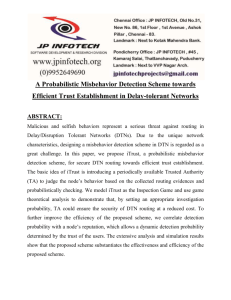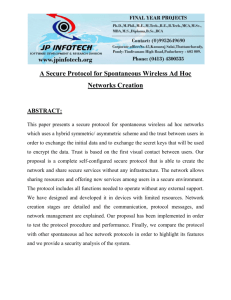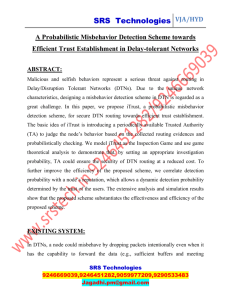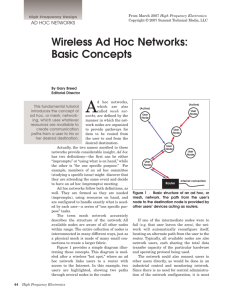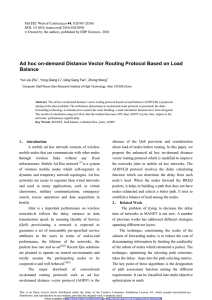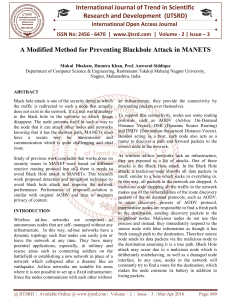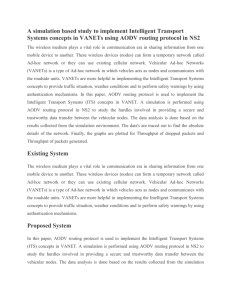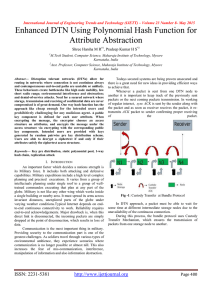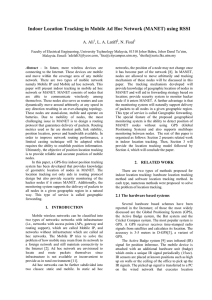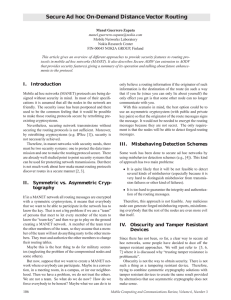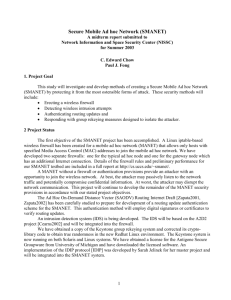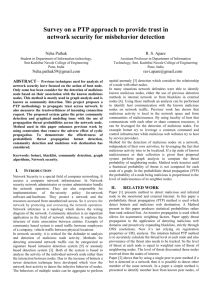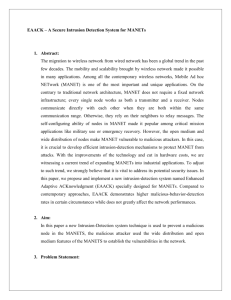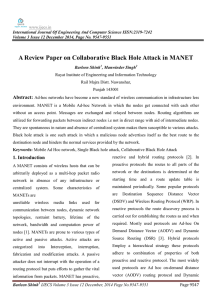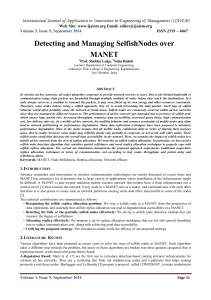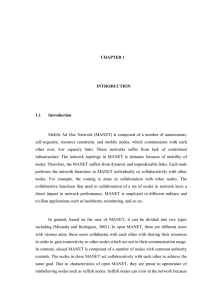a probabilistic misbehavior detection scheme toward efficient trust
advertisement
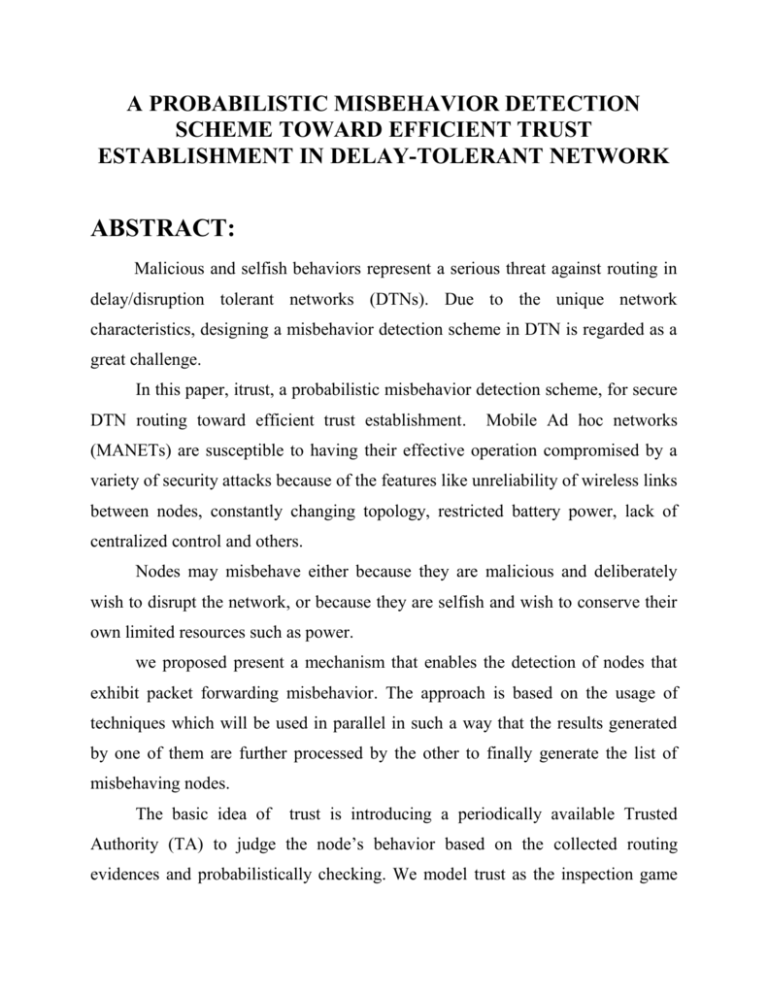
A PROBABILISTIC MISBEHAVIOR DETECTION SCHEME TOWARD EFFICIENT TRUST ESTABLISHMENT IN DELAY-TOLERANT NETWORK ABSTRACT: Malicious and selfish behaviors represent a serious threat against routing in delay/disruption tolerant networks (DTNs). Due to the unique network characteristics, designing a misbehavior detection scheme in DTN is regarded as a great challenge. In this paper, itrust, a probabilistic misbehavior detection scheme, for secure DTN routing toward efficient trust establishment. Mobile Ad hoc networks (MANETs) are susceptible to having their effective operation compromised by a variety of security attacks because of the features like unreliability of wireless links between nodes, constantly changing topology, restricted battery power, lack of centralized control and others. Nodes may misbehave either because they are malicious and deliberately wish to disrupt the network, or because they are selfish and wish to conserve their own limited resources such as power. we proposed present a mechanism that enables the detection of nodes that exhibit packet forwarding misbehavior. The approach is based on the usage of techniques which will be used in parallel in such a way that the results generated by one of them are further processed by the other to finally generate the list of misbehaving nodes. The basic idea of trust is introducing a periodically available Trusted Authority (TA) to judge the node’s behavior based on the collected routing evidences and probabilistically checking. We model trust as the inspection game and use game theoretical analysis to demonstrate that, by setting an appropriate investigation probability, TA could ensure the security of DTN routing at a reduced cost. To further improve the efficiency of the proposed scheme, we correlate detection probability with a node’s reputation, which allows a dynamic detection probability determined by the trust of the users. The extensive analysis and simulation results demonstrate the Effectiveness and efficiency of the proposed scheme using AODV Protocol. EXISTING SYSTEM: An ad hoc network nature is the main cause for making it more Vulnerable to wireless attacks. Ad hoc nodes are wireless in nature that makes it Prone. Due to the unique network characteristics, designing a misbehavior detection scheme in DTN is regarded as a great challenge. Each device in a MANET is free to move independently in any direction, and will therefore change its links to other devices frequently. Each must forward traffic so it’s making data transition problem. When we sending our data to destination in the techniques will not give more security, we don’t know the accurate selfish node in our infrastructure Ad-hoc network so in this also main drawback of our wireless Network. Another Problem it will drop more dropping packets, making time delay, reduce delivery ratio, as well as throughput because of selfish node. In iTrust scheme, the energy of node is easily reduced. And also unwanted storage of Contact history, Delegation history, forwarding history. PROPOSED SYSTEM: Mobile ad hoc networks (MANET) rely on the cooperation of all the participating nodes. The more nodes cooperate to transfer traffic, the more powerful a MANET gets. AODV protocol itself incurs a low checking overhead. However, to prevent malicious users from providing fake data transmission, calculate the dropping and losing packet size, packet delivery ratio for optimal estimation. Here we implementing and finding the dropping packets for optimal estimation for AODV. Path Tracing Algorithm to detect the malicious attack using per hop distance and pixel wise measurements link frequent appearance count parameters using AODV. So we can detect accurate misbehave person. Therefore there is a strong motivation for a node to deny packet forwarding to others, while at the same time using their services to deliver own data. SOFTWARE SPECIFICATION: HARDWARE SPECIFICATION: Processor : Intel Pentium III or higher RAM : 1 GB or higher Hard Disk : 40 GB or higher Mother Board : Intel 845 g chipset or higher I/O : Optical mouse and keyboard SOFTWARE SPECIFICATION: Operating system : Linux-Mint15 Programming : Network Simulator 2.35 Language Used : TCL and C++ Network Modeling Tool: Dia or Ns2
